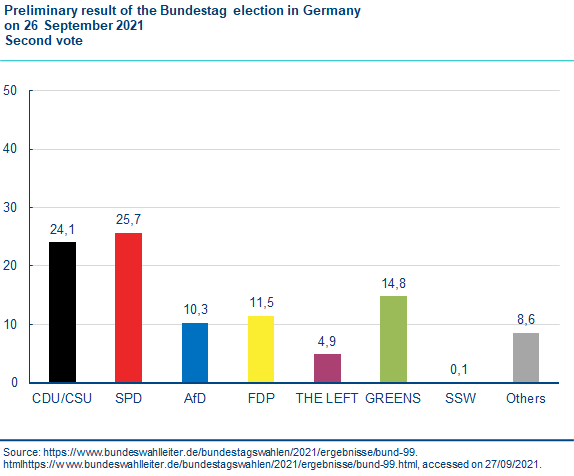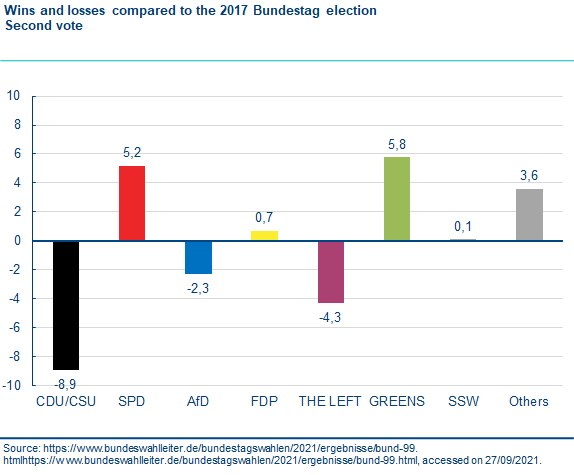The outcome of the 2021 Bundestag election marks a shift in the electoral landscape, the signs of which had been looming for quite some time. Above all, it was the willingness to switch party preferences that decided the election outcome. The switching of party preferences no longer happens within political camps such as conservatives-liberals or social democrats-greens, but instead criss-crosses political constituencies. Moreover, the percentage is increasing from election to election. In this year’s election, about three-quarters of the parties’ electorates were willing to shift their vote in the run-up to the election.
The election was characterised by a weak performance of the CDU/CSU, gains for the Greens, SPD and FDP, while the political fringes lost (the AfD lost by a smaller margin, but The Left lost considerably).
While the SPD’s personalisation strategy is evident from their election outcome, the spillover effects on the perception of the party are negligible. As for the CDU/CSU, on the other hand, the party and top candidate were rated more poorly than in the 2017 election. While the Greens did better than last time, they still fell short of expectations. They have even lost authority in the important sphere of environmental and climate policy compared to 2017.
Read the complete election analysis here.












You need to sign in in order to comment.